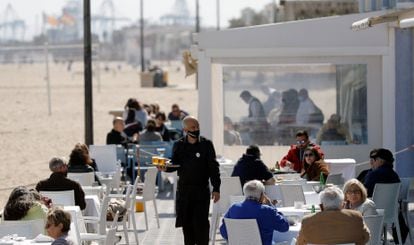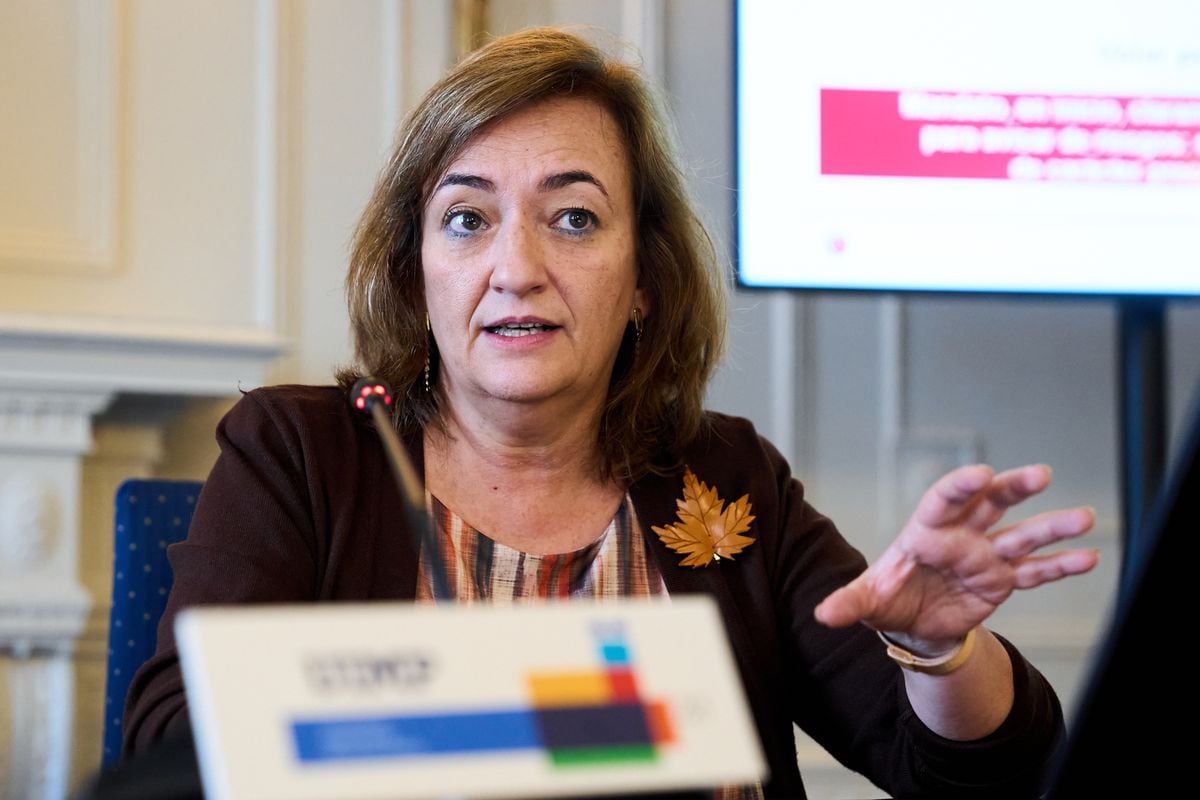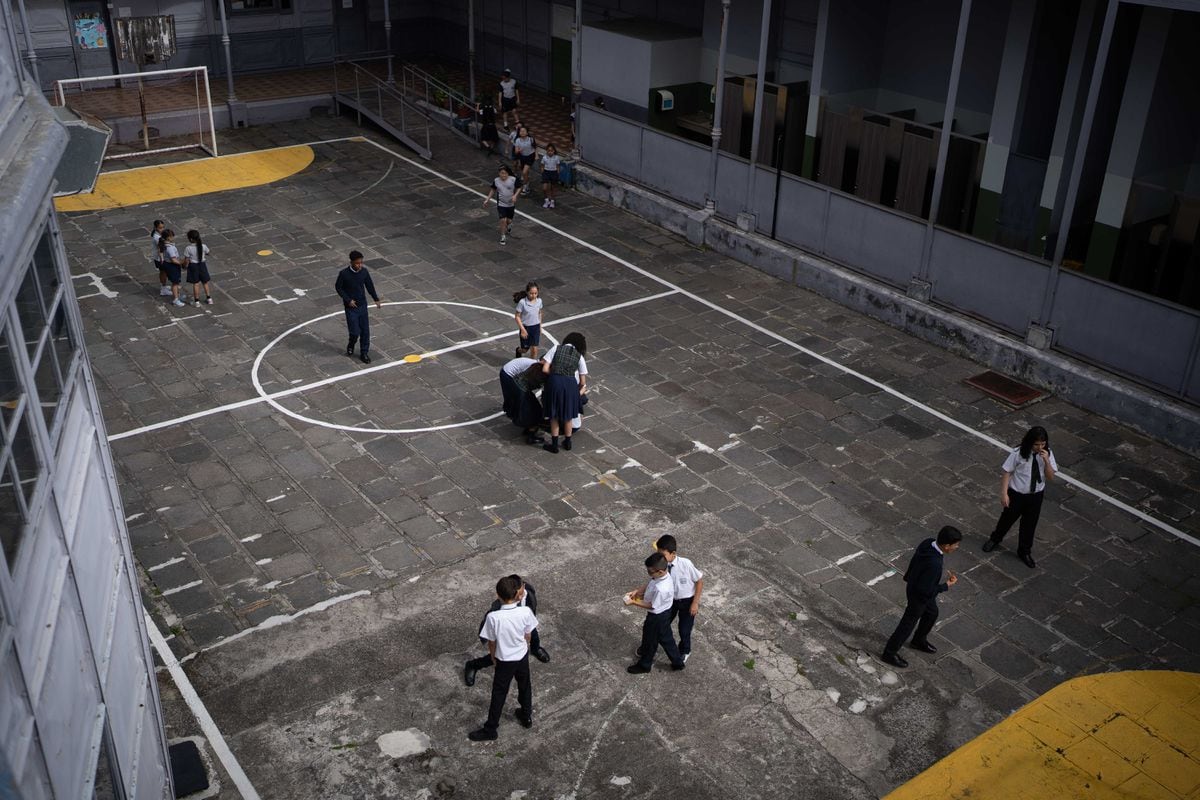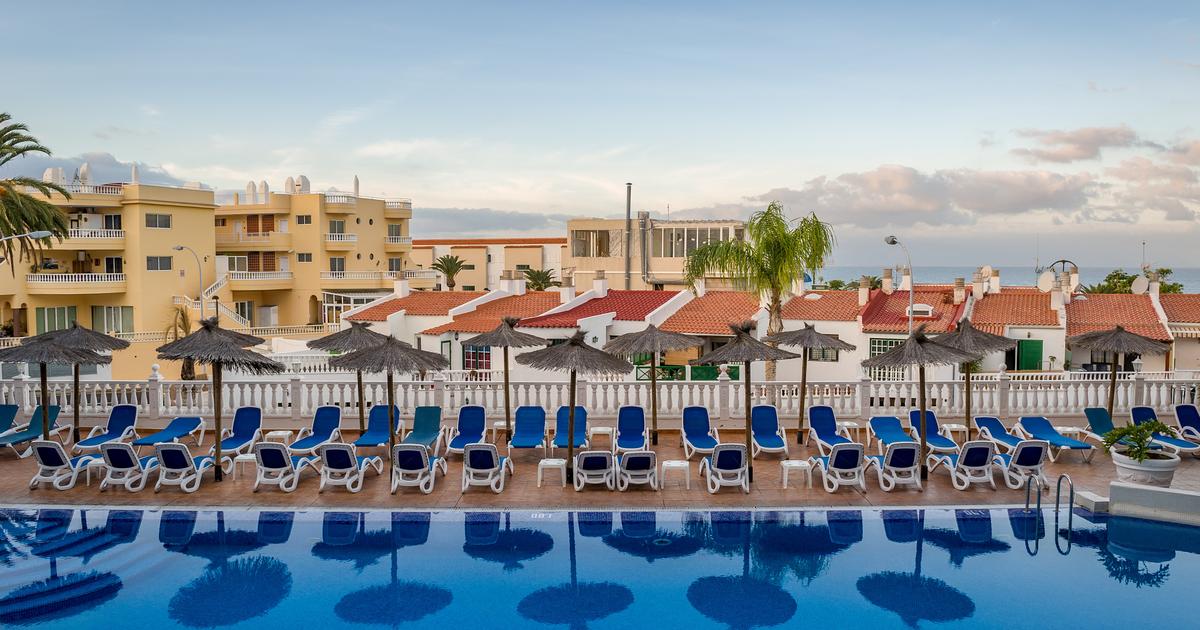A waiter attends the medas of a terrace of a bar on the Malvarrosa beach, in Valencia, on March 15.Manuel Bruque / EFE
The investments that Spain raises with the EU recovery funds to modernize and improve the competitiveness of the tourism sector will create just over 100,000 new jobs in the industry. This is reflected in the document entitled
Plan for the modernization and competitiveness of the tourism sector
, within the information that has been sent to Brussels with a series of project and reform commitments with the community authorities in exchange for receiving the 140,000 million euros.
“Taking into account that the impact on total employment of the plan will be 800,000 new jobs in three years, the distribution of the new jobs created could be equivalent to the weight of the tourism sector in the economy (12.7%), therefore the creation of more than 100,000 additional jobs in the tourism sector is expected ”, explains the text.
In this way, with an investment of 3,400 million euros, the industry will be able to generate jobs at a higher level than other activities, one of the reasons why the employers of the sector demanded a greater investment effort for tourism .
More information
The Government plans to extend the toll to all state and regional highways
The Government plans to raise taxes on air transport to reduce emissions
These are some of the main data of the Government's strategy with tourism, after finally making public this Wednesday the details of
the Recovery, Transformation and Resilience Plan
that it has sent to Brussels. Coincidence or not, it does so one day after the Madrid regional elections and shows an extensive document that includes measures that will be favored by the population and others that will generate rejection, such as the plan to extend tolls to all highways. from the country. The program has around thirty “components” into which the main areas that include the major reforms and investments to which Spain is committed are divided.
Another example of the driving capacity of the tourism sector is the impact of this investment on Spain's GDP as a whole: the 3,400 million budgeted will have an estimated impact on the economy of 6,732 million. In other words, it will produce 3,332 million euros in addition to what was invested. A calculation that is made based on the study
The economic impact of tourism in the European Union
.
Sources from the Ministry of Industry, Commerce and Tourism believe that this estimate, in any case, falls short. This is explained because it only takes into account direct investment in tourism, but the sector will benefit from projects in other areas that will improve, for example, the infrastructure used by travelers. Hence, the estimated impact of the entire plan on tourism, according to these sources, amounts to 44,000 million euros in the period of execution of the plan. "There are many investments and projects that will improve the tourist competitiveness of Spain", they assure.
The modernization of the sector is based on two fundamental pillars: the transformation of the tourism model towards sustainability (it will have an investment of 1,923 million) and special actions in the field of competitiveness (920 million). Thus, in the first case, the document ensures that in 2023 sustainability plans will have been carried out in 165 destinations that will benefit 75% of tourism workers. In addition, by that date there will be some 30,000 students enrolled in the courses of "training in skills of innovation, quality, accessibility, governance and sustainability in tourist destinations."
On the competitive side, by 2023 the Government expects to have developed 45 tourism products, to have financed sustainable projects for the maintenance and rehabilitation of historical heritage for tourist use, and to rehabilitate 50 historical heritage assets.
Likewise, the component that addresses the modernization of the sector includes the intention of improving the "commercial competitiveness of areas of special tourist influx through the use of new technologies and the integration of trade in the tourist offer".
Support for the islands
The Government's plan includes a series of investments focused on tourist activity in non-peninsular territories, which are highly dependent on the sector. "In 2023, actions with an impact on 400 economic and social agents in the territories of the Canary Islands, the Balearic Islands, Ceuta and Melilla will have been financed, improving their competitiveness and capacity to adapt to changes in international markets", the text states.
In the case of the Canary Islands and the Balearic Islands, the document includes actions to modernize obsolete tourist infrastructures, improve the attractiveness of public spaces and environmental management of beaches and waste treatment. In addition, it is committed to the "development of an alternative tourism product to the sun and the beach, such as shopping tourism" for the Canary Islands, where it also wants to encourage transport companies to facilitate connectivity between islands and of these with the Peninsula - something that can be Contradictory with the intention of raising taxes on air transport contemplated in the plan. In the case of the Balearic Islands, the alternative product to the sun and beach that he points out is that of nature tourism. And it adds the intention of seasonally adjusted to receive a good number of travelers during more months of the year,as well as incentives to open companies outside of the high season.
Another objective of the plan is to promote other inland or rural tourist destinations to expand the offer of the Spanish sector. The sun and beach will continue to be as important as until now, explain sources from the Ministry of Industry, Commerce and Tourism, although it is intended to diversify the offer and extend the months of high season. To this end, the "detection, design and promotion of proximity tourism in rural settings" has been initiated through the "promotion, promotion and development of cultural heritage for tourist use, studies for reconversion, system design, regulations and cooperation mechanisms. public-private for reconversion ”, among others.




/cloudfront-eu-central-1.images.arcpublishing.com/prisa/GDO6WKTQ7RFXX2LM5LUOSIODT4.jpg)



